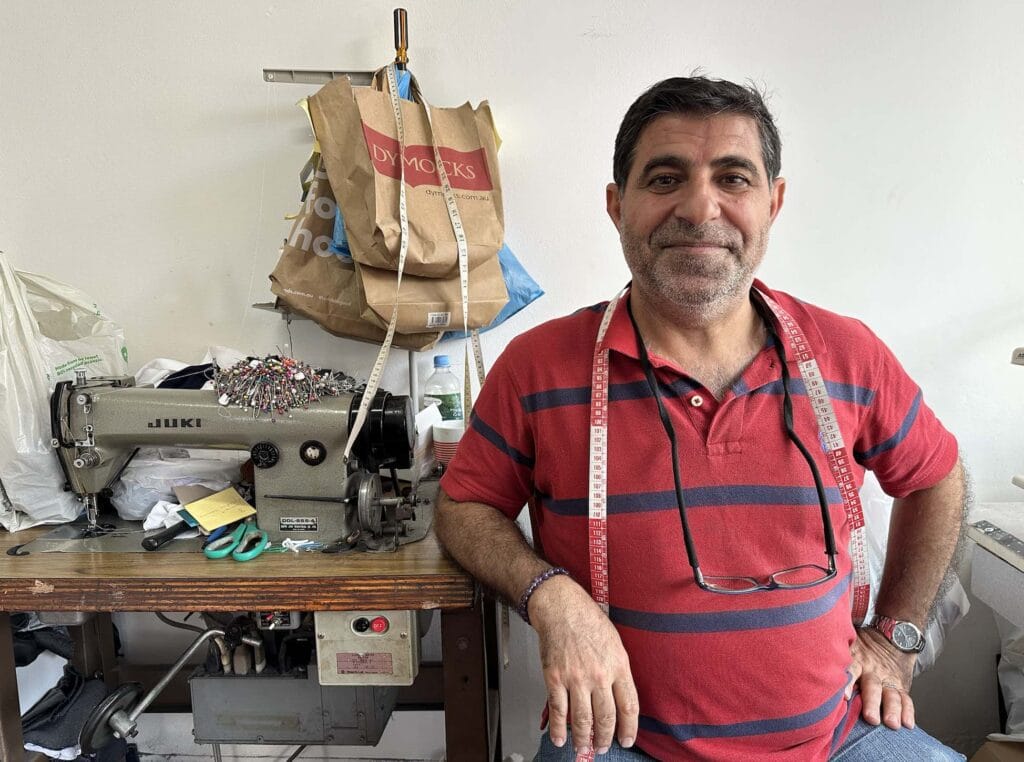Leading Tailor Perth Services: Tailoring Solutions for Perfect Fits
Leading Tailor Perth Services: Tailoring Solutions for Perfect Fits
Blog Article
Recognizing the Tailoring Refine: From Textile Option to Final Fitting for the Ideal Closet
The customizing procedure is a complicated interaction of art and scientific research, starting with the crucial choice of textile choice and culminating in the accurate adjustments of last installations. Each material kind brings unique top qualities that affect not only the aesthetic charm however likewise the garment's longevity and viability for different events. Comprehending the subtleties of customizing strategies can raise one's closet to unprecedented degrees of sophistication. As we check out these elements further, one have to think about just how even the smallest information can dramatically affect the overall end result of one's personal design.
Significance of Fabric Choice
Picking the right fabric is vital in the customizing process, as it straight influences the comfort, durability, and overall visual of the last garment (tailor perth). The option of fabric sets the foundation for the garment's design, functionality, and performance. Different fabrics possess special properties, such as breathability, weight, and stretch, which can substantially impact just how the garment drapes and fits the body
Furthermore, fabric choice impacts the garment's longevity and ease of treatment. Top quality fabrics can endure wear and tear, maintaining their look and structure in time, while lower-quality materials might bring about pilling or fading. In addition, the appropriate textile adds to the garment's capacity to shift across seasons and celebrations, thus improving adaptability.
A tailored piece made from an appropriate textile not just showcases workmanship yet likewise elevates the user's self-confidence. Recognizing the nuances of textile choice is extremely important for any kind of customizing endeavor. It ensures that the last item not just meets the visual wishes of the customer however likewise straightens with functional needs, consequently achieving a harmonious balance in between form and feature in the tailored closet.
Kinds Of Fabrics and Their Usages
Recognizing the different kinds of materials available is essential for making notified choices throughout the customizing procedure. Each material possesses unique qualities that determine its suitability for certain garments and celebrations.
Its versatility enables it to be customized right into everything from shirts to outfits. Its all-natural flexibility aids garments maintain shape over time.
Silk emanates high-end and is light-weight, making it best for eveningwear and delicate shirts; nonetheless, it calls for careful handling due to its delicacy. Bed linen, with its distinctive surface, is a popular selection for cozy environments, supplying a ventilated and crisp feel, but it wrinkles easily, which might affect the garment's look.
Synthetic textiles, such as polyester and nylon, deal resilience and resistance to creases, making them suitable for daily wear and active apparel. Understanding these fabric kinds and their homes enables much better decision-making, ensuring that each customized piece not just fits well however also lines up with the intended function and event.
The Tailoring Methods Discussed
The art of customizing counts on a selection of methods that change fabric into well-fitted garments. Central to this process is pattern drafting, where a tailor develops design templates based upon the customer's dimensions and preferred style. This initial action guarantees that the garment will certainly fit the wearer properly prior to any reducing takes place.
When patterns are established, reducing methods come right into play. Accuracy is vital as errors can bring about misfitting garments. Tailors usually make use of different reducing methods, such as single-layer cutting for elaborate designs and multiple-layer cutting for effectiveness on typical patterns.
Basting is one more essential strategy, enabling dressmakers to temporarily sew fabric items together for an initial installation. This technique supplies the opportunity to evaluate the drape and total silhouette before final sewing.
Seaming strategies, including french seams and flat-felled joints, boost the garment's toughness and visual allure. Tailors additionally employ techniques such as interfacing and cushioning to offer framework and shape to details areas, like collars and shoulders.
Finally, completing techniques, consisting of hemming and edge completing, make sure the garment's long life while supplying a sleek look. With each other, these techniques develop the backbone of effective customizing, resulting in splendid, tailor-made clothing.
Suitable Changes and Factors To Consider

Key factors to consider consist of the shoulder fit, which must neither sag nor limit movement, and the sleeve size, which ought to enable comfortable arm movement while maintaining a polished look. Additionally, adjustments at the waistline official source can improve the shape, with options to allow out or absorb material as required.
The increase of pants is another critical factor; it must sit comfortably over the hips without causing pain, enabling ease of movement. Hemming lengths for both pants and skirts must mirror the user's preferred design while respecting proportions.

Preserving Your Tailored Garments
Correct maintenance of tailored garments is important to preserving their fit and appearance with time. To make certain longevity, routine cleaning is paramount. Always comply with the treatment label directions, which might suggest completely dry cleaning for fragile materials or maker washing for more long lasting products. Prevent regular laundering, as this can use down the material and change the garment's form.
Storage space is similarly essential; usage padded wall mounts for coats and coats to preserve shoulder framework, and store pants folded nicely or hung to avoid creasing. Protect garments from straight sunshine, which can fade shades and damages fibers.
Additionally, regular evaluations for minor repairs can avoid larger concerns. Check for loose switches, fraying joints, or signs of moth damages, dealing with these problems promptly to maintain the garment's stability.
Finally, my explanation think about seasonal turning. Putting on customized items in moderation permits fabrics to recuperate, extending their life-span. By applying these upkeep techniques, you can make sure that your customized garments continue to be as immaculate as the day you initially wore them, enhancing your ideal closet for years to find.
Final Thought
The tailoring procedure, encompassing fabric choice, experienced techniques, and accurate fitting adjustments, plays an important function in creating garments that boost both convenience and design. Recognizing the value of upkeep expands the life of customized garments, strengthening their worth in a well-curated closet.
Selecting the best fabric is crucial in the customizing process, as it directly affects the convenience, longevity, and total aesthetic of the final garment. The choice of fabric sets the foundation for the garment's capability, efficiency, and style. Different fabrics have special residential or commercial properties, such as weight, breathability, and stretch, which can dramatically impact how the garment drapes and fits the body.
The art of tailoring depends on a variety of techniques that change fabric into well-fitted garments.The tailoring process, encompassing material option, knowledgeable techniques, and specific suitable adjustments, plays a critical role in creating garments that improve both convenience and style.
Report this page